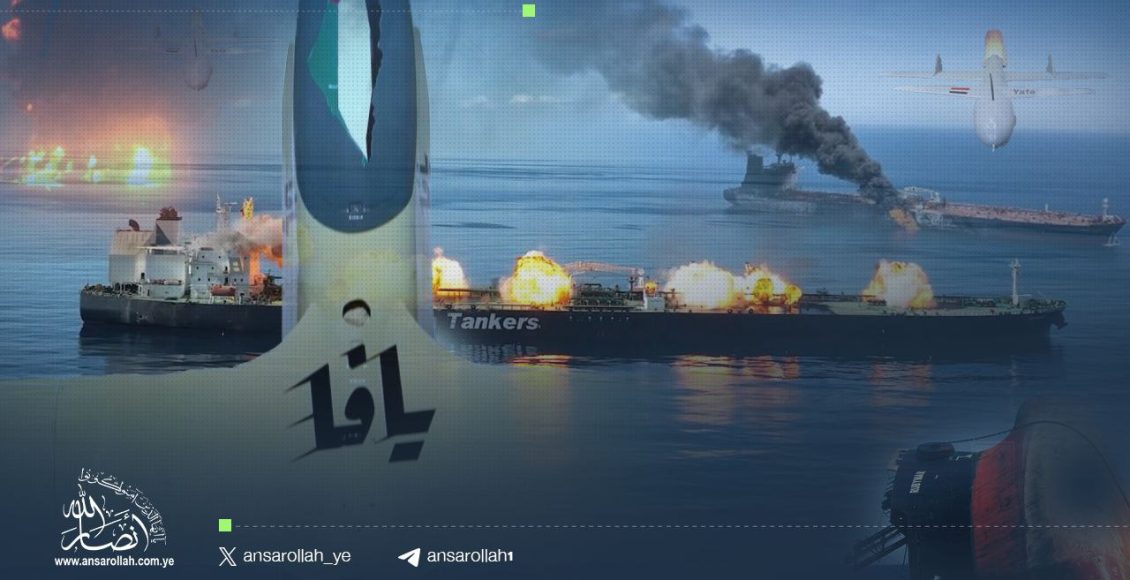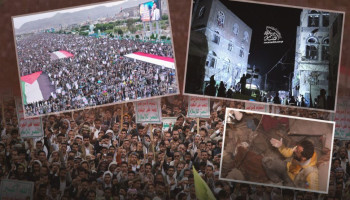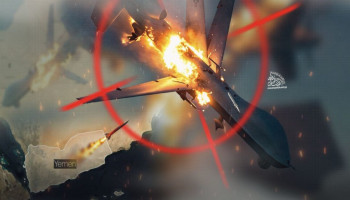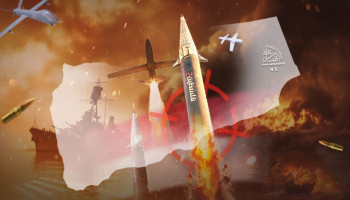In an unexpected turn of events, Yemen has emerged as a key player on the frontline, defying Western expectations and enhancing the values of the al-Aqsa Axis which are based on deterrence, response, and victory. This approach was aptly described by Sayyid Hassan Nasrallah in his first speech following the Al-Aqsa Flood as a strategy of accumulating points.
Liberated from political pressures and unburdened by economic calculations, Yemen enters the confrontation with different standards, embracing full engagement based on the principle of "fire is met with fire." This principle has guided Yemen's support operations for Gaza since the first week of the initial battle, which Sayyid Abdul-Malik Badreddin al-Houthi termed "the Battle of the Promised Conquest and Holy Jihad." This title reflects the deep civilizational and faith-based dimensions that govern Yemeni support operations, shaping the escalating rhythm of both naval and ground actions within a comprehensive political, military, and popular stance.
An Unprecedented Historical Confrontation
The naval confrontations Yemen engages in against U.S. forces and their international coalition, as well as against European forces and their Western allies, are far more significant than media outlets convey. This is evident from the series of continuous statements issued by leaders in the U.S. and European navies. For instance, the effects of the operations targeting the massive USS Eisenhower are still unfolding. Every now and then, an American naval officer or soldier reveals new details about the confrontation, often expressing surprise at the Yemeni ingenuity in managing the fire and the terror caused by the scale of the confrontation and Yemen’s insistence on inflicting damage, if not complete destruction, on American assets in the Red Sea.
The strikes by Yemen's armed forces on American warships—be they battleships, aircraft carriers, destroyers, or frigates—achieve immediate hits and cause strategic repercussions that extend beyond the current temporal and geographical boundaries of the battle. For example, the targeting of the aircraft carrier " USS Eisenhower" represents more than just a tactical success; it symbolizes Yemen’s capacity to impose long-term consequences on American naval power.
In the latest statements, U.S. Red Sea Fleet Commander Admiral Marc Miguez remarked that Yemeni military capabilities have shocked and confused the U.S. Navy. He added that the weapons revealed by Yemeni armed forces during the confrontation have been a major and unexpected shock to U.S. military circles, demonstrating that the U.S. was unprepared for such a confrontation. The intense firepower and the types of weapons and tactics employed by the Yemenis have created a new form of engagement, particularly through the use of unmanned drones, which American naval forces had neither trained for nor encountered in their previous battles.
This and other statements underscore the Yemeni military’s innovation in managing operations, reflecting significant expertise. The most important takeaway from these admissions is that the Yemeni mind, in providing support, possesses a remarkable level of courage and audacity—qualities that the U.S. has typically sought to crush through propaganda and by exaggerating its military might. Yet, the confrontation with Yemen has shattered this American illusion in just a few rounds, an illusion that has dominated nations and brought empires to their knees.
Western Media Exposes American Weakness
Several significant observations have emerged in Western media and think tanks regarding Yemeni operations. Notably, the Cato Institute reported that it is unlikely the United States can reduce the capabilities of the "Houthis" to the point where they can no longer attack ships crossing the Red Sea. After nearly a decade of fighting against Saudi-led forces—backed by the U.S.—the "Houthis" have proven their proficiency in hit-and-run tactics, using inexpensive, easily movable weapons distributed throughout Yemen.
The Washington Times highlighted, under the headline "America Retreats... From Plans to Reposition in the Region to Withdrawal Amid Various Fears," that for the first time in decades, the Pacific and Indian Oceans are devoid of U.S. aircraft carriers due to concerns over retaliation following the assassination of Ismail Haniyeh.
Similarly, Axios revealed that Washington has evacuated the Red Sea of its ships and military assets, publishing a map showing the absence of American naval vessels in the Red Sea. This evacuation includes the USS Eisenhower and all its warships, due to the looming threat of Yemeni strikes targeting U.S. naval assets in the context of supporting Palestine.
The Pentagon had previously announced the deployment of the USS Lincoln and USS Roosevelt to the region, but global media confirmed their withdrawal from the Red Sea, fearing they would be targeted by Yemeni armed forces, especially after the leader of the Yemeni revolution vowed to strike any aircraft carrier entering the region.
Business Insider quoted a U.S. Navy spokesperson confirming that the USS Eisenhower strike group, alongside a few other warships, had expended $1.16 billion worth of weaponry in its fight against Yemeni forces in the Red Sea between October and mid-July alone. The site noted that these warships and aircraft had fired around 770 shells, highlighting the significant financial cost of Washington’s ongoing mission in the Red Sea. Business Insider also reported that these costs do not cover the expenses associated with the deployment of the USS Roosevelt.
Meanwhile, the National Interest published a series of reports and articles shedding light on the real decline of the U.S. Navy, noting that the severe weakness afflicting the U.S. Navy has become evident.
Yemen’s Mission Extends Beyond the Battlefield
A military expert focused on support operations and the broader military landscape commented: “The Yemenis may not fully realize the massive revolution they are leading today, standing alone against American power. The world, both East and West, is closely watching the unfolding events in the maritime theaters of the Red, Indian, and Arabian Seas with great anticipation. Everyone is paying close attention to every strike, eager to learn and benefit from every detail of the ongoing operations, especially China, which seems to be the biggest beneficiary, updating its databases and information based on the results.”
As for development and modernization, the same careful attention is being paid by the U.S., with Admiral Marc Miguez noting that the U.S. Navy has been forced to upgrade its weapons in response to the threats posed by Yemeni armed forces. It is well known that from the first month of the naval confrontation, the Pentagon allocated a large budget ($145 billion for research and development), with a significant portion directed towards upgrading U.S. naval weapons, particularly in air defense munitions used to counter Yemeni missiles and drones. Moreover, American officials have expressed a strong desire to learn from Yemeni tactics, particularly in terms of quick responses and maneuverability, as well as the use of certain military applications in lighter, less costly field operations. This demonstrates what could be considered a new school in military science, with Yemen today laying its foundational pillars through practical, experimental field operations, which may be revealed with greater clarity in the coming days by military experts and specialized institutes.
A Yemeni Mobilization and Awareness Lever
On the political front, which is equally important, Yemen is putting its strong hand on the weak points of Western power and, unknowingly, leading a process of awakening the world—both governments and peoples—to the true nature of Western brute force. This force is based on illogical and unjust balances that do not even align with the West’s own slogans and propaganda, which have built its so-called democratic empires, invaded countries, and toppled regimes. Often, these forces have clashed with and contradicted themselves when the benefits were not in their favor or when their interests were threatened.
Sayyid Abdul-Malik al-Houthi, in his weekly speeches during the Al-Aqsa Flood, leads this awakening process from the highest platform of the Axis, driven not only by his deep concern for the Palestinian cause but also by his fear for the essence of humanity, which today faces severe blows at the hands of Zionism. Those who reflect on his speeches and statements will find a wealth of awareness and enlightenment aimed at completely overthrowing Western agenda from the consciousness of individuals, peoples, and communities. This is achieved by dedicating a portion of his discourse to exposing Western contradictions, particularly American ones, grounded in the clear vision offered by the Quranic methodology, which instills in its followers. This raises the question again about the Quran's effective role in education and awareness, and why its immense potential impact has been absent, leading to the nation’s backwardness despite the Quran’s clear and evident teachings that guarantee its prominence among nations and its advancement over civilizations.







